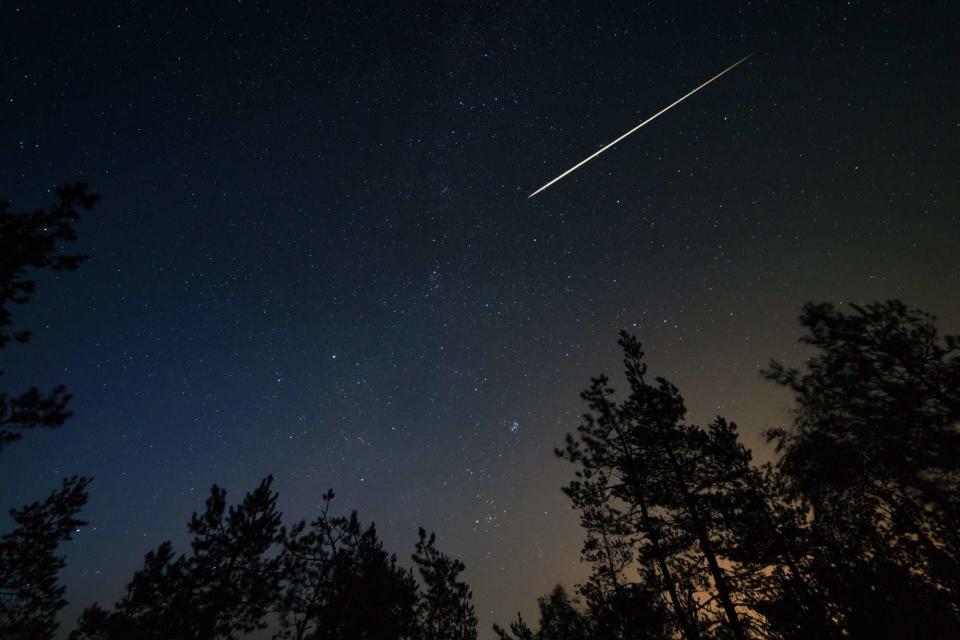The Lyrid Meteor Shower Peaks Soon—Here's When to See the Most Shooting Stars
The meteor shower starts next week, but doesn't peak until later this month.

With April's once-in-a-lifetime solar eclipse barely in the rearview, stargazers are already gearing up for another celestial event. Look up into the night sky this month and you'll see one of the oldest known meteor showers in history—the Lyrids.
The Lyrid meteor shower will put on its annual show for stargazers during its peak, which occurs late in the evening on April 21 until dawn on April 22. Its shooting stars may be more difficult to see this year than in 2023, as it will be sharing the night sky with a bright waxing gibbous moon, EarthSky.org reports.
Named after a constellation of shooting stars that dates back to 687 B.C., the Lyrids are the result of Earth passing through the tail of comet C/1861 G1 Thatcher. Despite its long lifespan, this shower has a shorter peak and lower hourly rate compared to more well-known meteor showers like the Perseids and Geminids, according to Planetary.org.
Although the shower's peak is short, the Lyrids are known for their fast and bright meteors. According to NASA, the shower can surprise stargazers with as many as 100 meteors per hour, although it's rare that this occurs. And while the shooting stars don't tend to leave bright dust trains, they can produce bright flashes called fireballs.
The 2024 Lyrid meteor shower will occur from April 15 to April 29, but it will be difficult to spot until it reaches its peak. During ideal conditions, you might see 10 to 15 Lyrids per hour, but this year that number will be lower due to the bright moon.
For optimal viewing, find an area well away from city lights or street lights, NASA says. Lie on your back with your feet facing east and look up. After about 30 minutes, your eyes will adjust to the dark and you will be able to spot the meteors.
Read the original article on Martha Stewart.

